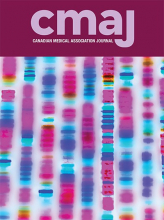Metronidazole-induced neurotoxicity is underappreciated
Metronidazole, usually prescribed for anaerobic and protozoal infections, can uncommonly cause adverse effects involving the central nervous system. The exact mechanism is unclear. In 1 case–control study, the incidence of neurologic events was 0.25%, although this is likely an underestimate.1
Metronidazole-induced neurotoxicity can present with a variety of clinical syndromes
Common central nervous system features include ataxia, dysarthria and altered mental status, but rarer manifestations such as seizures, encephalopathy and cerebellar dysfunction have also been described.2 Peripheral neuropathy manifests as diminished sensation, numbness and neuropathic pain. Patients with central nervous system abnormalities have coexisting peripheral neuropathy in roughly one-third of cases.2
Dose and duration of treatment are the primary risk factors, but symptoms may appear early and with small doses
Case reports suggest the average duration of treatment before symptom onset is 6–7 weeks, but symptoms can appear within days of initiation.2,3 Patients receiving metronidazole for inflammatory bowel disease, osteomyelitis and large, undrained abscesses are at greatest risk of neurotoxicity due to long exposure. A review of 110 adult cases with metronidazole-induced encephalopathy found the median cumulative dose was 65.4 g, although there was wide variability (range 5–2000 g).2
Up to 90% of patients with central nervous system involvement have characteristic lesions on magnetic resonance imaging (MRI)
Typical radiologic findings are most commonly seen on T2-weighted fluid-attenuated inversion recovery (FLAIR) MRI sequences. Symmetric, hyper-intense lesions of the dentate nuclei are commonly present, with lesions of the callosal splenium and dorsal pons of the same signal characteristics being the next most common abnormalities.2,4
Discontinuing metronidazole usually results in improvement
Most patients experience complete symptom resolution upon cessation of metronidazole, and complete or near-complete radiologic resolution occurs in about 75% of cases.2,4 The time course varies, but the symptoms of most patients resolve within 2 weeks.4
CMAJ invites submissions to “Five things to know about …” Submit manuscripts online at http://mc.manuscriptcentral.com/cmaj
Footnotes
Competing interests: None declared.
This article has been peer reviewed.
This is an Open Access article distributed in accordance with the terms of the Creative Commons Attribution (CC BY-NC-ND 4.0) licence, which permits use, distribution and reproduction in any medium, provided that the original publication is properly cited, the use is noncommercial (i.e., research or educational use), and no modifications or adaptations are made. See: https://creativecommons.org/licenses/by-nc-nd/4.0/











